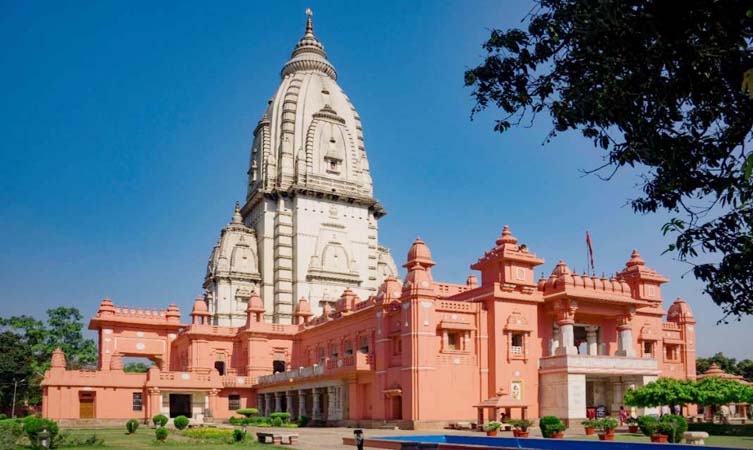Hailing from a modest farming background, Rani Ahilyabai Holkar was one of the bravest, influential and bold rulers of the Malwa region in the 18th century.
For thirty years her reign of peace,
The land in blessing did increase;
And she was blessed by every tongue,
By stern and gentle, old and young.
Yea, even the children at their mother’s feet,
Are taught such homely rhyming to repeat.
In latter days from Brahma came,
To rule our land, a noble Dame,
Kind was her heart and bright her fame,
And Ahilya was her honored name.
Poet Joanna Baillie, 1849 (in honor of Rajmata Ahilyabai Holkar)
The Journey From a Small Village to The Royal Lineage
Malhar Rao Holkar, a commander in the Maratha Peshwa Balaji Baji Rao service and lord of the Malwa territory, stopped in Chaundi on his way to Pune. According to legend, he saw the eight-year-old Ahilyabai at the temple in the village. Moved by her values, intelligence, and character, he brought the girl to the Holkar territory as a bride for his son, Khanderao Holkar. Despite her not belonging to the royal lineage, she was made the worthy ruler of Malwa after her husband’s death.
Rani Ahilyabai, after her husband died in 1754, gave up on the desire to live and decided to attempt Sati. Having lost the only heir to his throne, Malhar Rao Holkar prevented his daughter-in-law from performing the practice. Malhar Rao motivated her to lead in place of her husband. He wanted her to be the flagbearer of the Holkar dynasty as his successor. She ruled the most glorious 30 years ever witnessed in Indian history.
Rajmata Ahilyabai has been a vivacious contributor to where Hindu traditions stand today. She has made tremendous contributions to the reconstruction, renovation, and maintenance of significant Hindu temples across India. Here’s a list of some of the diverse temples constructed by her.
Some Significant Temples Built and Reconstructed By Rani Ahilyabai Holkar
Somnath temple
.jpg)
Dedicated to Lord Shiva, the Old Somnath temple (also known as the Ahilyabai Temple) was built by the queen herself in the 17th century. The Ahilyabai temple was built as a substitute when the Islamic rulers destroyed the main Somnath temple. This substitute, the Ahilyabai temple, is said to contain the original jyotirlinga hidden from the main temple complex to protect it from invasions.
Kashi Vishwanath Temple

One of the most prominent Hindu temples, the Kashi Vishwanath temple of Varanasi, is the heart of Hinduism. This temple has its worthy place in the list of 12 jyotirlingas. In the year 1669 CE, the Mughal emperor Aurangzeb not only demolished a big part of the temple but also built the Gyanvapi Mosque on its site.
In the year 1742, Maratha ruler and Rajmata Ahilyabai Holkar’s father-in-law, Malhar Rao Holkar wished to demolish the Gyanvapi mosque. He rebuilds the temple. However, he could not execute his plan successfully. Hence, in 1782, Ahilyabai constructed the temple complex adjacent to the Gyanvapi mosque that we see today.
Siddhivinayak Temple

Ahilyabai built the prestigious shrine, Siddhivinayak temple, located at Siddhatek in the Ahmednagar District of Maharashtra. Siddhatek is the seat of this self-materialized Shri Siddhivinayak on the banks of River Bhima. Furthermore, it has a huge sanctum sanctorum, and hall. The Holkar queen made generous donations for its construction and maintenance.
Also, other than these prestigious temples, Ahilyabai embellished and beautified various sites including Kashi, Gaya, Somnath, Ayodhya, Mathura, Haridwar, Kanchi, Avanti, Dwarka, Badrinath, Kedarnath, Rameshwaram, and Jagannath Puri.
Trade and Culture During Ahilyabai Holkar’s Rule
Her capital at Maheshwar was a melting pot of literary, musical, artistic, and industrial achievements. Her capital had exquisite and distinct craftsmen, sculptors, and artists. She paid and accredited them handsomely for their work and kept them in high regard. Furthermore, she also established a one-of-its-kind textile industry in the city. Moreover, during her reign, the merchants produced their most elegant clothes, the Maheshwari handloom culture bloomed, and trade flourished to no end.

The End of Rani Ahilyabai’s Reign
Ahilyabai Holkar died on 13th August 1795, having reigned for nearly 30 years. However, today, her legacy, teachings, and values still prevail in most of our hearts. Moreover, one of the purest and most exemplary rulers that ever existed on Indian soil.
The New Generation of Holkars Keeping Ahilyabai’s Legacy Alive

Maheshwar has been the Holkars’ home base for over 250 years. In the year 2000, Prince Richard Holkar, her descendant, and son of the last Maharaja of Indore, converted his home in Ahilya Wada into a guest residence, today known around the world as the Ahilya Fort Hotel. Ahilya Fort, or the Ahilya Wada, in the central Indian town of Maheshwar, is located above the sacred river Narmada, along with her personal residences, offices, and darbaar audience hall still intact. The Ahilya Fort Hotel has 19 rooms of character, set in six buildings of the 18th century, with modern amenities and comforts. The hotel is well located to explore the highlights of Maheshwar, including its bustling village markets and riverside complex of temples.
All images belong to their respective owners.

